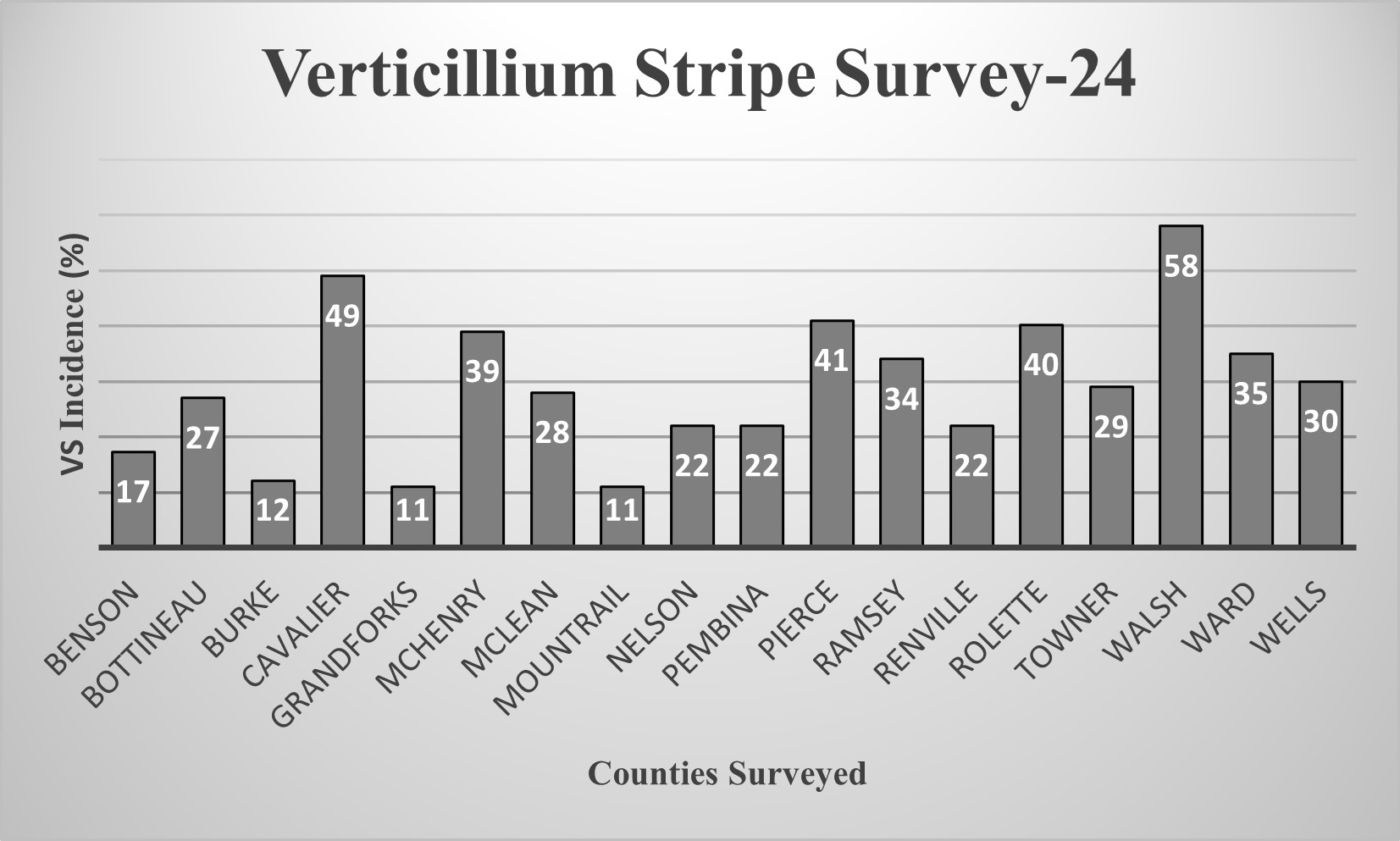This Verticillium stripe survey was conducted in major canola-growing counties of North Dakota to determine the prevalence of the disease-causing pathogen Verticillium longisporum. The survey was done by inspecting canola stubbles for disease infections with Verticillium stripe. A minimum of four to five fields were scouted in each county. Thirty fields were scouted in Cavalier County, the central canola-growing county in North Dakota. The survey was done after swathing or harvest in the fall. The survey group walked in a “W” pattern, stopping at five spots and uprooting twenty stem stubbles from the ground at every spot. Each sampling point was separated by 100 meters or 328 feet. The roots of one hundred stems were evaluated for the presence of Verticillium stripe in the surveyed field. The stubbles with likely infection of Verticillium were collected, bagged, and labeled with the field location. All the symptomatic stems with roots were evaluated for incidence (% infected stems) by cross-section clipping of canola stems just half an inch below ground level in the Langdon REC laboratory.
Figure 1: Percent incidence of Verticillium stripe from canola growing counties in North Dakota, 2024.
Results: The survey, done from fields of major canola-growing counties in North Dakota, indicated the presence of the disease Verticillium stripe in all eighteen counties surveyed (Figure 1). The county-wide incidence data suggest that the disease was found in high amounts, ranging from 11% to 58%.

